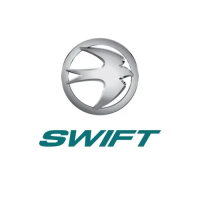Preparing for the Road
9
DRIVING LICENCE
Licences issued to drivers who passed their
car driving test before 1st January 1997
include categories B+E and C1+E which
gives them entitlement to drive motor
vehicles up to 7500kg MTPLM.
Drivers who passed their test on or after this
date have category B entitlement only, which
restricts the entitlement to motor vehicles
with up to 8 passenger seats and an MTPLM
of up to 3500kg with trailers up to 750kg
MTPLM (4250kg combined) or larger trailers
providing the combination of the trailer and
towing vehicle does not exceed 3500kg and
the MTPLM of the trailer does not exceed
the unladen weight of the towing vehicle.
Drivers who passed their test on or after the
1st January 1997 will need to take an
additional test(s) to gain the B+E and C1+E
entitlement.
A number of Swift Group motorhomes have
an MTPLM greater than 3500kg, therefore
you must check you have the driving licence
entitlement for the vehicle you drive.
VEHICLE CLASSIFICATIONS
Motorhomes up to 3500kg MTPLM are
P/LGV (Private Light Goods Vehicles),
motorhomes with an MTPLM over 3500kg
and up to 7500kg are P/HGV (Private Heavy
Goods Vehicles). These are used in defining
MOT classifications and vehicle excise duty
(road tax) classifications.
ADVICE ON TOWING
The towing capability of each Motorhome
differs dependent on the specific chassis
and engine types, (see ‘Towing Capabilities
Table’ in your service handbook). This table
takes account of the maximum front & rear
axle loadings as well as the minimum front
axle loading in two conditions, MRO and
MTPLM condition.
Towing in these, and any other condition
requires sensible loading & distribution of
payloads to ensure the requirements of the
towing capability table are met.
When towing, the demands on both the
vehicle and driver increase. A trailer reduces
manoeuvrability, the ability to climb hills,
acceleration and braking capacity and
makes the vehicle handle and corner
differently. It will also increase the fuel
consumption of the vehicle.
Always brake in good time. Special care
must be taken when descending gradients.
Change down before going down a steep hill
so the engine can act as a brake. Ensure
that the towing vehicle tyre pressures are
correct and adjusted for full load conditions
and that the trailer tyre pressures are as
recommended by the trailer manufacturer.
Regularly check the operation of trailer
brakes and lights.
For maximum stability, when loading the
trailer ensure that the loads are properly
secured during transit. Position loads so that
most of the weight is placed close to the
floor and, where possible, immediately above
or close to the axle(s). Where the load can
be divided between trailer and tow vehicle,
loading more weight into the vehicle will
generally improve the stability of the
combination. After loading the trailer, check
that the nose weight and axle loads are in
accordance with the manufacturer’s
recommendations, also check the rear and
front axle loads on the Motorhome. When
calculating the laden weight of the trailer,
remember to include the weight of the trailer
PLUS THE LOAD.
NOTE: Towing regulations vary from
country to country to country. It is very
important to ensure that national
regulations governing towing weights
and speed limits are observed (refer to
the relevant national motoring
organisation for information). The stated
maximum permissible towing weights
refer to the vehicle’s design limitations
and NOT to any specific territorial
restrictions.

